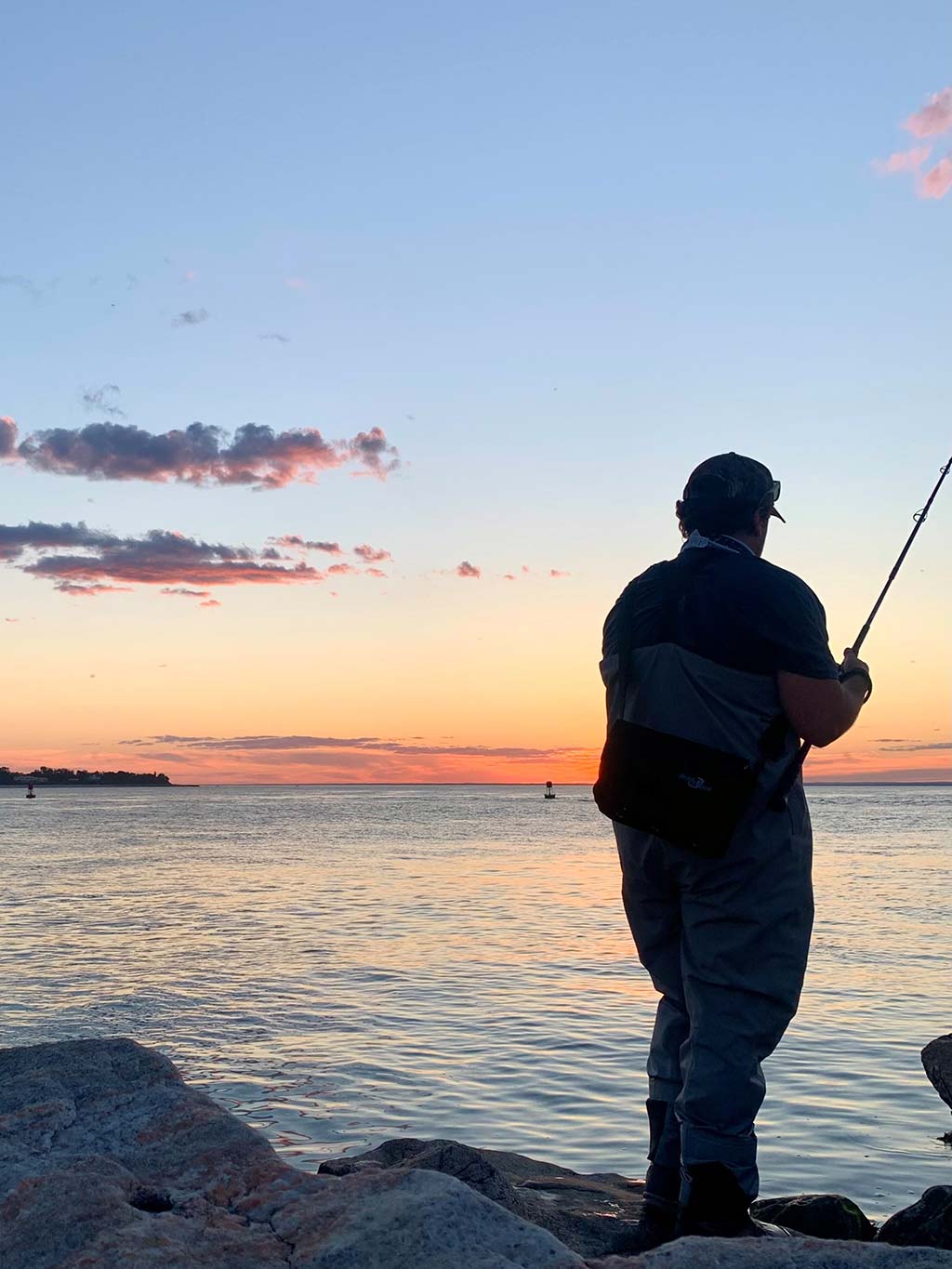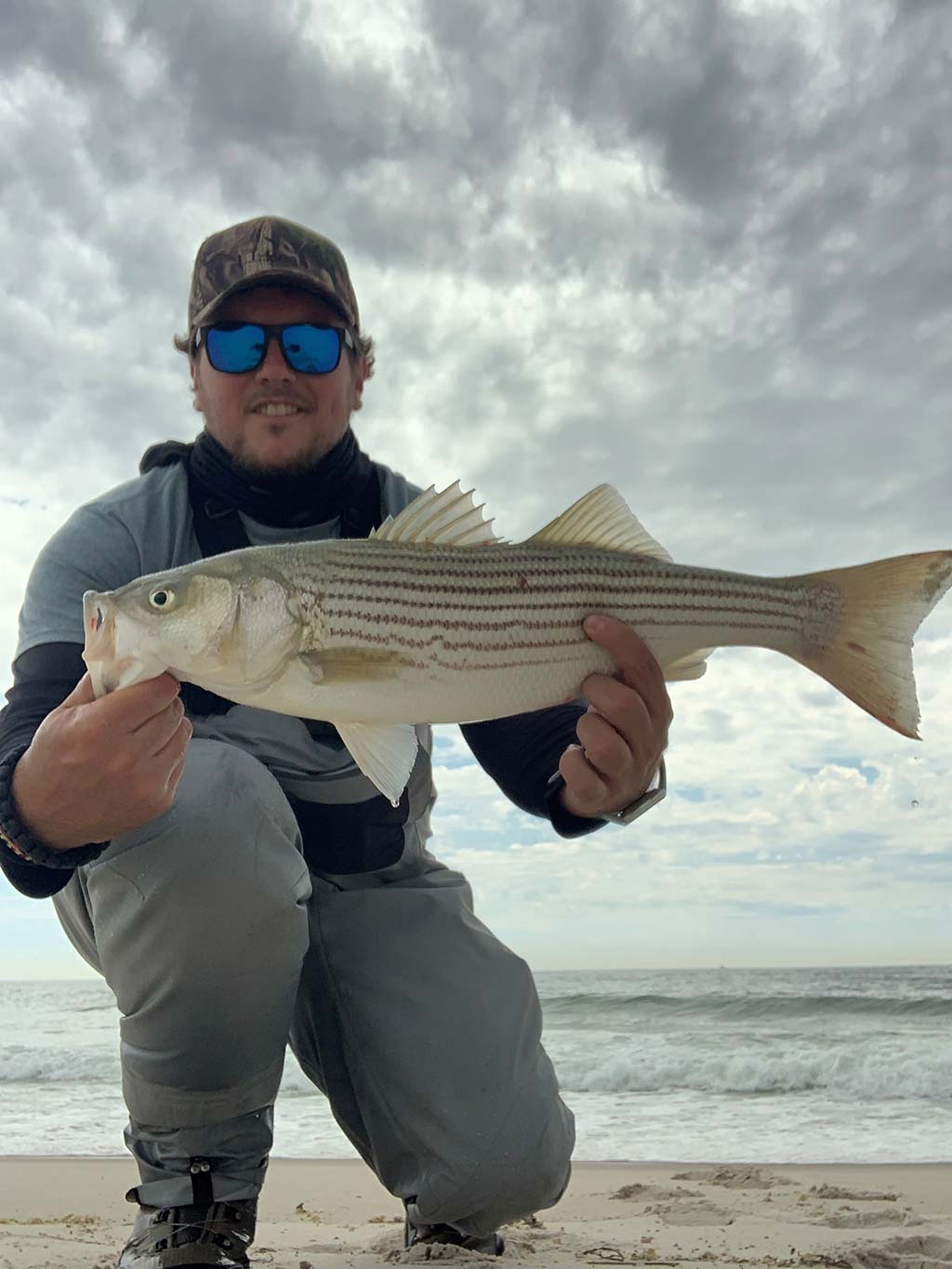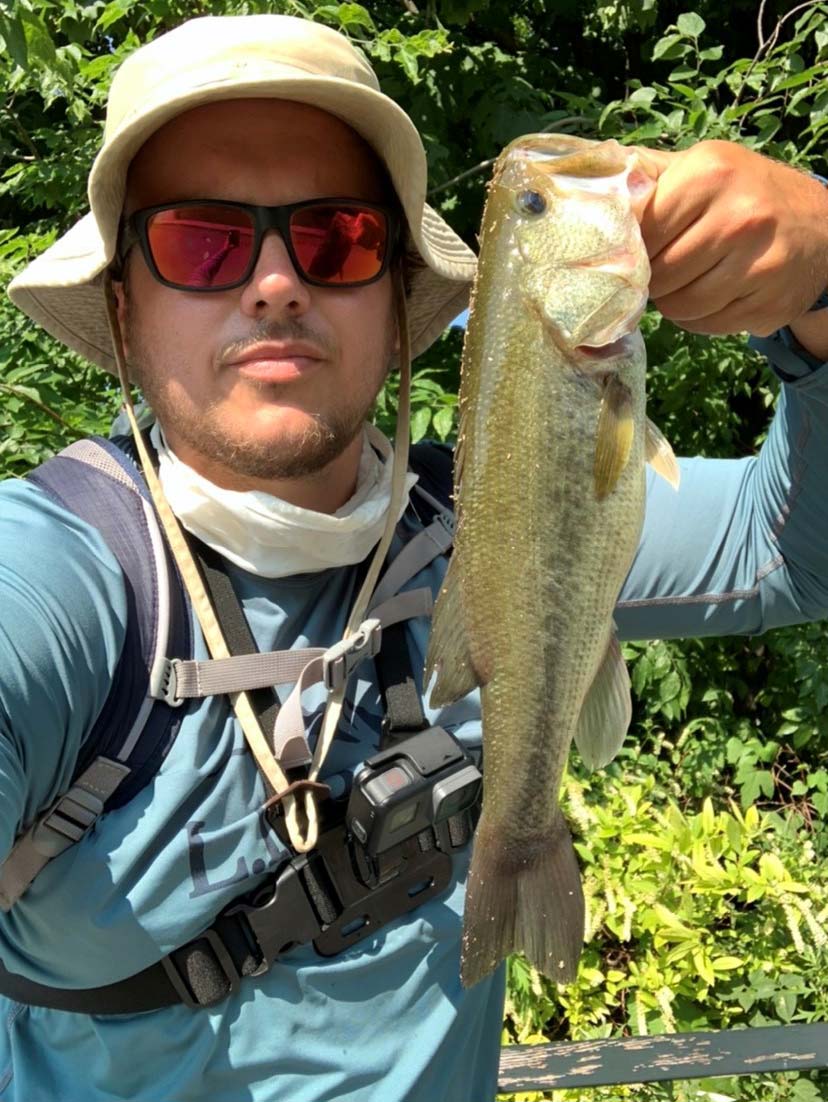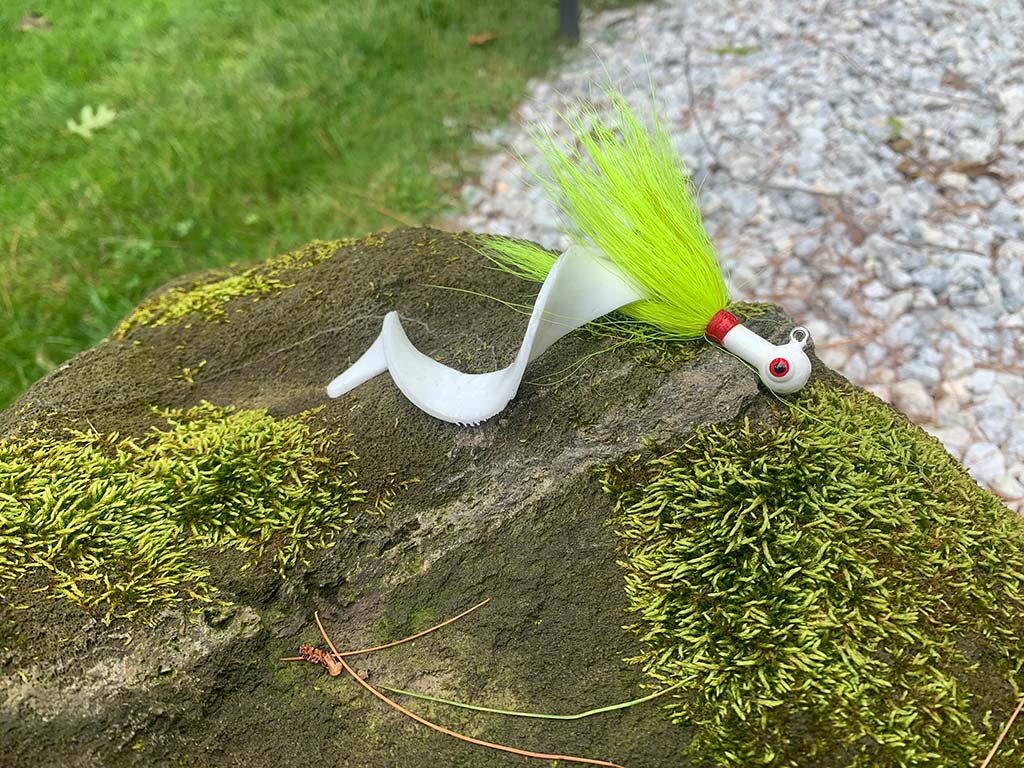
A lot of the tactics for fishing in the summer heat are the same ones I’ll apply when fishing freshwater in the winter.
There’s no grind quite like fishing under the blazing sun for hours on end during the dog days of summer. Freshwater and saltwater anglers alike share the frustration of trying to stay cool and patient while waiting on that hit, which may, or may not come. You could be wading for largemouth bass, or patrolling the tuna grounds and that sun is equally as strong. Fishing these hot and humid summer conditions is not the most enjoyable game to play, but those days are here. We all know the feeling — it’s early August and you may be struggling to produce a catch or even a bite, so much so that even a sea robin would provide a welcomed bend in the rod.
Keeping on the fish during the summer heat isn’t always a simple task, but even during those 90-degree days there are ways to troubleshoot so you can scratch that itch and catch some fish. In order to produce a bite it will take some personal reflection and observation of one’s current methods, and a willingness to change up your approach or try something new.
Personally I have a handful of different tactics I try out when the fishing is tough and the sun is tougher. Believe it or not, a lot of the tactics for fishing in the summer heat are the same ones I’ll apply when fishing freshwater in the winter. As someone who appreciates and enjoys fishing both freshwater and saltwater, I have learned equally playing around with different techniques to my fishing — some of these tactics have helped me hook into a few extra fish when the going really gets tough. These are interchangeable on both fishing fronts.

Low & Slow
When fishing with artificials keep the idea of low and slow in mind, especially for surfcasters. It almost always pays off to slow down your retrieval and keep it lower in the water column during summer heat. The reason being — when the water temperature becomes too warm (or too cold during winter) in the Northeast, most fish are not as willing or able to expend the same amount of energy for a meal (with some coldwater species as exceptions).
For example, a larger striped bass that may have given chase to a big topwater plug during the spring migration is going to be less eager or aggressive towards this presentation in the summer heat based on not only heightened water temperature but the presence of other readily available marine food sources in the summer months, which require less energy expenditure.
Trying out different variations of lures and running them slowly and gently through the bottom of the water column is a key practice. Species like bluefish and striped bass will likely be hugging the bottom a bit more than usual to avoid overly warm surface water temperatures. While fishing this method is more time consuming and tedious, it tests the patience of an angler as well. It will take much repetition and testing to achieve success, however, this is not the only tactic we can utilize as anglers to get a few hesitant fish to feed.

Light Is Right
In the middle of June during the COVID-19 pandemic, I spent a sweltering 91-degree afternoon wading knee deep along the shores of Jamaica Bay. The fish would not budge on anything. I did not receive so much as a tap for three hours. Discouraged, sweating, sunburned and likely dehydrated, I tied on my trusty 1/2-ounce chartreuse bucktail jig with a half strip of curled white Otter Tail. This presentation was heavy enough with the slow moving tide to get me on bottom, and small enough that it wasn’t a perceived risk for a weary and hungry nearby striped bass. A jig, reel in slack and pause motion nearly all the way into my feet did the job. THUD, with a slight swing of my rod to ensure the hookset, I was locked into a fiesty striper which likely followed my bucktail into the shallows from deeper water. A low-and-slow, consistently steady retrieve with a downsized presentation duped this fish.
This brings about my second go-to tactic for producing a bite in the muggy New York air on days like this one — Downsize your presentation. Whether using artificial or live/dead bait, downsizing works wonders when tricking the otherwise finicky fish. On this day the 1/2-ounce bucktail got the job done, but I wouldn’t have been able to use this 1/2-ounce
bucktail with my heavier surf rod.
My third tactic is more downsizing, but not on bait presentation. Downsize to some lighter tackle. I like to use a 7-foot medium/heavy spinning rod and a 3000 sized reel (that I dually use for big freshwater fishing applications). Had I been using my 9- or 11-foot surf rods with different sensitivities, it’s entirely possible that I may not have been able to properly fish the lightweight 1/2-ounce jig along the bottom in the manner which drew a lethargic striper to bite.

New Target
In the dog days of summer (as they say), nothing is guaranteed. It is entirely possible, and likely, that any given angler could apply the aforementioned tactics in the summer heat and still receive no reward on the end of their line. As some brilliantly sarcastic uncle probably once said, “That’s why they call it fishing, not catching!” and he’s right. But just because we didn’t catch after changing up the location of our bait in the water, or the size of the bait, or the size of the rod and reel does not mean all hope is lost.
Another good way to produce a bite, to develop as an angler, and have some fun while doing it is change up your target species from time to time. It forces us as anglers to adapt to our situation, and try out new approaches and locations.
If you typically surfcast for striped bass, but the summer dog days have you downtrodden and fiending for a bend in the rod, look for a new target species of interest to you. This species could be of interest to you for the table, or it could be of interest because you have a life list of species to catch, or maybe this species is just fun to target and provides more fruitful opportunity in the warmer waters. Fluke (summer flounder) is one example of many great options for anglers across the Northeast, from shorelines, kayak or boat fishing.
Productive Windows
BLow & Slow
Downsize your presentation
Lighter tackle
Switch up your target species
Mornings & Nights
Finally, observe your own schedule and free time. Especially when fishing saltwater, observe the moons and tide times and keep a log of the weather/water and general fishing conditions. If you find that you are typically fishing in the afternoon or early evening after work during the summer, that may be one of the obstacles to overcome, as these hours are the times of day when the water temperatures are highest (especially when fishing inshore) due to sun exposure. Early mornings and late nights prove successful time and time again for those willing to venture out into the dark, or wake up to fish when others are snoozing.
As the “Crazy” Alberto Knie would say “Fish the non-human hours”. This is my favorite tactic of all, especially when the summer rolls around. While fishing the “non-human hours” is not a walk in the park by any means, it’s good to try something new, and changing up our tactics certainly beats the grind of trying to unsuccessfully trick fish under the relentlessly summer sun.



